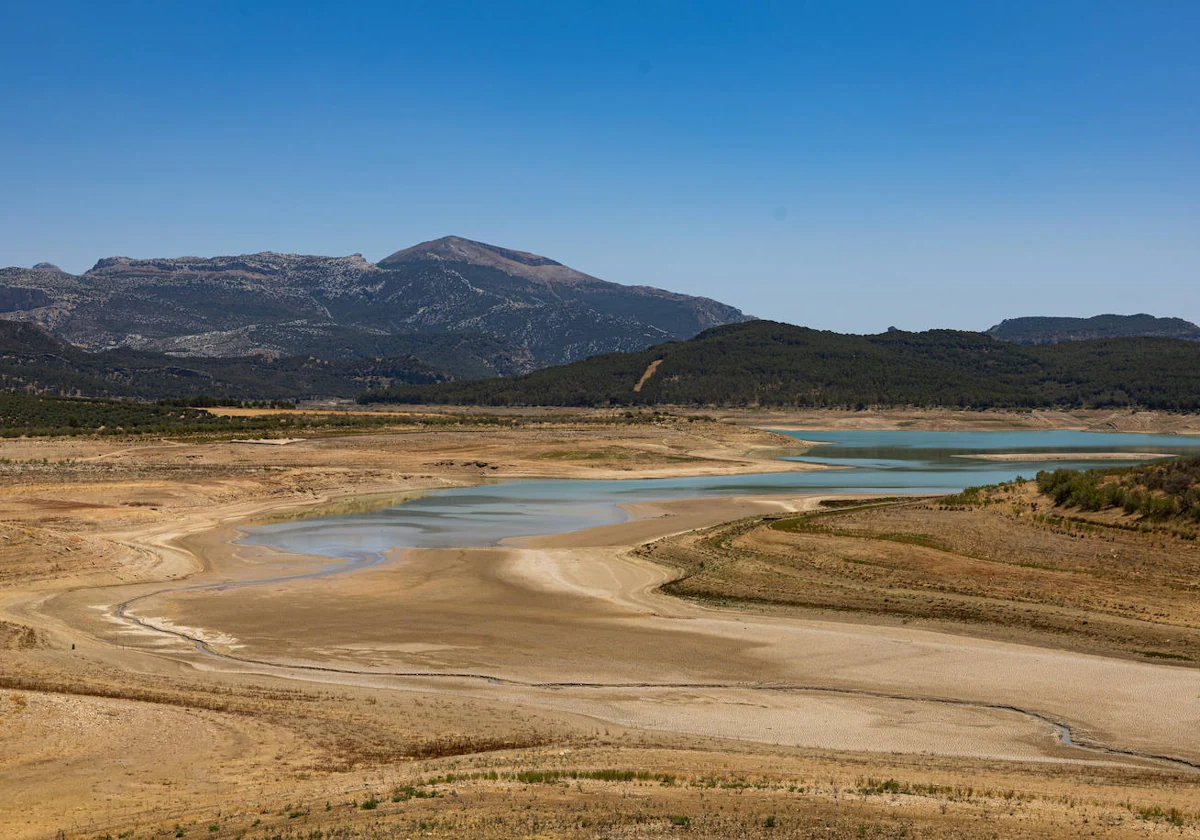Alarm bells sound as amount of water held in Malaga province's reservoirs continues to drop
The reservoirs currently hold 110 cubic hectometres, that's almost 30 less than this time last year. As a result, the Junta's drought committee is now expected to impose some new usage restrictions in the coming weeks
The drought crisis is rearing its ugly head again with Malaga only having enough water for ten months in its reservoirs.
Last Friday (13 September) marked four months since the province's main water reserves received some respite thanks to the heavy rains in March. However, on 13 May, the reservoir levels started to drop. Since then, they have lost a total of 60 cubic hectometres. This is more or less what Malaga city consumes in 14 months or two thirds of the annual needs of the Costa del Sol. Friday 13 also saw another milestone registered, with the water in storage no longer reaching 110 cubic hectometres, almost 30 less than this time last year.
Tightening water restrictions
At the start of October there will be a new drought commission meeting, which will inevitably have to tighten usage restrictions, the regional ministry of agriculture confirmed. From the current 225 litres per inhabitant per day, the commission could recommend 160 or 180 litres.
The hydrological year will close on the 30th of this month with some light rain expected at the end of next week. But, barring a miracle, this year could be worse than the last. The rainfall measured in the reservoirs for 2023-24 on Friday was barely 257mm, six less in year-on-year terms.
54
gross hectometres of water Malaga city takes each year from the reservoirs (it must be taken into account that desalination produces brine rejections, the net is much less). On the other hand, the coast needs about 90 hectometres per year and the urban consumption of the Axarquia is 22.
That is the average. However, in the Axarquia the figures this year have improved by 45mm, while in La Concepción (between Marbella and Istán) they remain similar and in the Guadalhorce system there is an overall drop. This leaves the three large reservoirs that supply Malaga city (Guadalhorce, Guadalteba and Conde de Guadalhorce) on the verge of falling below the 50 hectometre threshold (21 less than what is considered a crisis status). Bearing in mind that Malaga needs 54 gross per year, factoring in water loss due to evaporation, that leaves 10-months-worth of water. The Junta de Andalucía and Malaga water supply company Emasa are working to restore wells whose water is treated in the El Atabal plant.
Currently, the Guadalteba reservoir barely stores 20 cubic hectometres at the, while the Guadalhorce, salinised, does not exceed 13 and the Conde around 16. A year ago they had 42% more water, 88 hectometres, enough water for more than a year and a half.
But that's only for urban consumption. Irrigation water, like in the Guadalhorce, has long since been reduced to a minimum, with the palliative supply of regenerated water, such as that received from the Peñón del Cuervo, in Malaga city (nine hectometres per year), which only reaches half of the farms.
Meanwhile, the Axarquia reservoir currently stores 24 hectometres, almost twice as much as last year. Meanwhile, the Costa del Sol is not on the worst scale of severity, with the levels varying between severe and moderate drought.
109
cubic hectometres stored in the province's reservoirs. The reservoirs in Malaga city now stand at 50.
The La Concepción reservoir on the western strip of the Costa del Sol is in a slightly better situation than last year, with 26 cubic hectometres. This will be in addition to the Marbella desalination plant which will start producing 20 hectometres per year from December.
Work to continue making progress on projects such as the Gibralmedina reservoir (between Cadiz and Malaga) and the second desalination plant on the Costa de Sol, whose preliminary project will be drawn up by Acosol as part of its investment plan, will be crucial.


